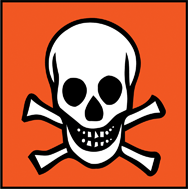This tutorial review – which should particularly appeal to chemists, biochemists, and molecular biologists interested in catalysis, redox processes, and enzymology – summarizes the recent progress toward developing catalysts capable of destroying one or more of the classical chemical warfare agents under ambient conditions. Specifically, we explore the reactions of sulfur mustard, the G-series of organophosphorus nerve agents including sarin and soman, and the organophosphorus nerve agent, VX. Catalysts range from metal-centered oxidation catalysts to engineered catalytic antibodies.
You have access to this article
 Please wait while we load your content...
Something went wrong. Try again?
Please wait while we load your content...
Something went wrong. Try again?


 Please wait while we load your content...
Please wait while we load your content...